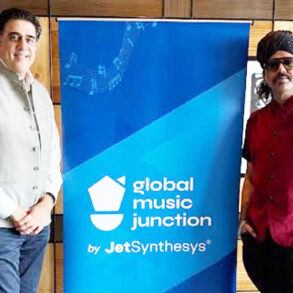Before the Beijing-based artist Sun Yitian came to be known for her vibrant collaboration with Louis Vuitton, she was recognized as China‘s “it” artist who likes to paint decapitated Ken dolls that appear eerily glamorous.
A child of the ’90s, the 32-year-old Sun is a member of China‘s “open door” generation, an era that coincided with the rapid rise of personal wealth as China came to be known as the factory of the world.
Much of Sun’s work evokes her memories of growing up in Wenzhou, a manufacturing hub that produced many self-made millionaires in the 1990s.

A Ken painting made in 2020 by the Chinese artist Sun Yitian.
Courtesy
“Shops often sold counterfeit Barbie and Ken dolls when I was little, and I remember taking them apart, which was really easy because they were fake,” said Sun of her “Ken” series, which made its debut in 2019, not long after she finished her undergraduate studies in the painting department of China Central Academy of Fine Arts.
“People see a lot of violence in my treatment of Ken, as if I sliced his head off and put it under a harsh limelight, but the idea was not as bloody. I just wanted to present the doll as an object,” said Sun, who said the choice of Ken as a subject matter was also a reaction to “calls to subvert the male gaze popping up in public discourse.”

Ken, 2023
Courtesy
Mathieu Borysevicz, director and founder of the Shanghai-based Bank Gallery, who first discovered Sun on Instagram in 2017, argued that the artist, with precise brushstrokes, fully debunked the symbols of patriarchy, much like the film “Barbie,” which hit theaters two years after Sun’s Kens made their debut.
“However, Yitian’s gesture is more severe,” observed Borysevicz, who said Sun’s Ken recalled beheading moments in the works of Caravaggio or Guido Reni.
“He is not the man running around mad without a head, but he is the idle head staring out into oblivion. Ken is a still life, speechless, objectified, and impotent,” added Borysevicz.
Her plastic animals, which gave life to products ranging from handbags and ready-to-wear, to perfume bottles in the latest Louis Vuitton Voyager Show, are a part of Sun’s earliest works, which she created during her senior year in college.
The Taobao-purchased, mass-produced plastic animals are first photographed in her studio and then painstakingly turned into paintings that take over a month each to produce. The characters, ranging from a duck, a parrot, and a dinosaur to a panther, are more symbolic artifacts than the Kens, but nonetheless explore similar ideas about artificial beauty.
A penguin character, which Sun created in 2018, fetched up to 1.7 million renminbi, or $234,000, in the secondary market, according to public records from Yongle Auction in 2023.

“Penguin With Eyelashes,” a painting created in 2018 by Sun Yitian
“It describes how the world has become so smooth and beautiful, a world we view as a phenomenon,” said Sun.
As for the use of photorealistic details and deliberately loud colors, Sun said they were influenced by French philosopher Jean Baudrillard’s concept of hyper-reality, which “foretells over and over again a world that has become obsessed with beautiful illusions.”
Borysevicz, who praised Sun’s exceptional skill and craft as a painter and her “sharp conceptual wit” as a conceptual artist, believes that the attraction of her work lies in its sheer, shimmering and aesthetically pleasing surface, which quickly turns decadent.
“She feeds us the plasticine world of commodity and prestige that defines our post-capital global aspirations,” observed Borysevicz. “We relish in the simple delights of superficiality.”
Sun enjoys the labor-intensive process that is “not much different from a construction worker,” but since 2023 she has added more workload to her schedule by pursuing a PhD at her alma mater focused on 20th-century French philosophy.
Sun joked that the collaboration with Louis Vuitton was a way to gather intel for her dissertation, which will have a chapter that dissects consumerism.
“This was a chance for me to understand how brands build their reputation in their markets, how they operate as a business,” said Sun.
“It helps me better understand consumerism and how fashion and luxury are exerting more influence in the world,” she added. “Luxury has become as big as Coca-Cola. It’s ubiquitous, you can’t escape it.”
This post was originally published on this site be sure to check out more of their content





